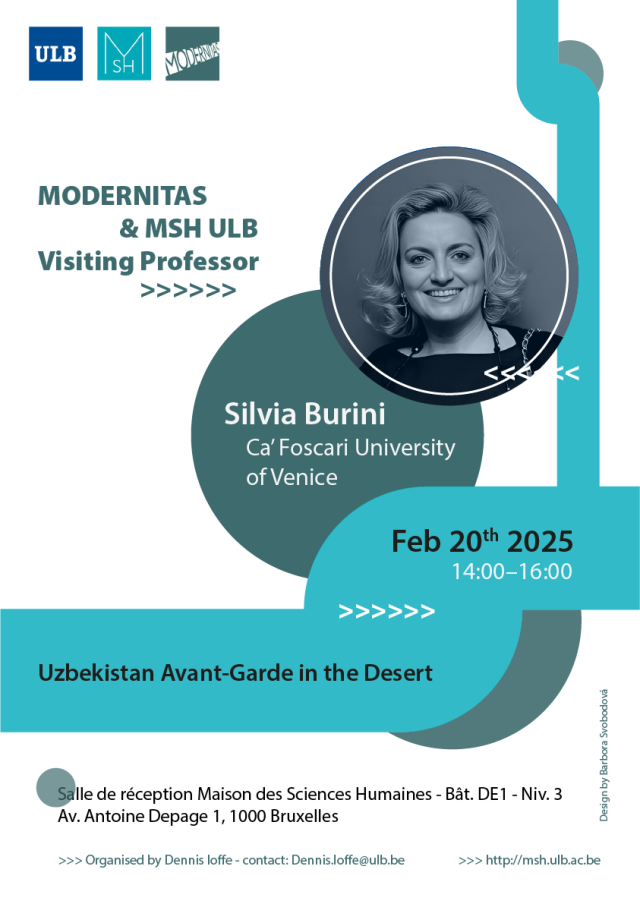Lecture "Uzbekistan Avant-Garde in the Desert"
Le 20/02/2025
by Prof. Dr. Silvia Burini, Professoressa Ordinaria of History of Russian Art, History of Contemporary Art, and Contemporary Art Curatorship at Ca’ Foscari University of Venice
The lecture intends to address the birth of painting in Turkestan and outline the development of a peculiar phenomenon, the Avant-garde Orientalis.
Until now, even the most original artists working in Central Asia in the Thirties and Forties were usually considered merely as a peripheral and marginal development of the great Russian Avant-Garde that was shaped from 1898 to 1922 by an extraordinary generation of artists. Here we can see the genesis and development of a genuine national school that include Volkov, Karakhan, Kashina, Korovay, Tansykbaev, and Usto Mumin, Ufimtsev and others. On the one hand we have to observe a precocious, intensely modern nucleus and the artist’s ability to absorb and reverberate all the major Western European experiences, and on the other hand the transformation of all these influences into an original, multi-ethnic and interdisciplinary language. Moreover, bringing together artists from Uzbekistan, Kazakhstan, Armenia, East Russia and Siberia create an intercultural equal dialogue between them. Almost all of artists were studied in Moscow and St. Petersburg (ex. Leningrad), but then found roots in a land that they discovered and where they chose to live and work. The Avanguardia Orientalis is hence inclusive, bringing artists together in mutual exchange – collaboration and sharing common roots.
There will also be a focus on the life and work of Igor Savitsky, a man who was essential to preserving and disseminating many aspects of 20th-century art and Uzbek Cultural Heritage. In the middle of the desert in Karakalpakstan, in the north-western part of Uzbekistan, Savitsky established one of the largest collections of Russian avant-garde art in the world, second in magnitude only to that of the Russian Museum in St. Petersburg. His museum is a rare testimony to one of the most important artistic movements in 20th-century Russian history.
Savitsky had a background as an archaeologist, then also became a painter out of pleasure and talent, and a collector out of obsession. From the end of the 1950s until the 1970s he collected thousands of archaeological finds, plus handicrafts and folk art specimens from the Nukus region, to which he added thousands of paintings and graphic works from Uzbekistan and the Soviet Union. The result is what we could call a ""synthetic museum"". Savitsky had been displaced during World War II in Turkestan and artists who had lived and worked there as well were also the focus of his interest. In the Nukus Desert, he revived the roots of modern Uzbek art. In conclusion will be presented the exhibition experience in Florence and Venice and will be analysed the new layout of the museum in Nukus.
Thursday 20th February 2025, from 2pm until 4pm
Salle de réception
Building De1 - Level 3 - Room R.3.105
Avenue Antoine Depage 1
1000 Bruxelles
Free entrance

